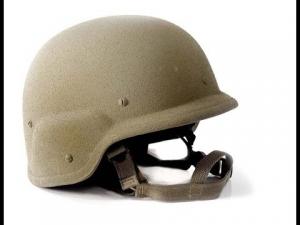PASGT Helmet
Випадкові:

Нарукавний знак 184 транспортного командування СВ США

Таг Служби тилу північного району Армії Оборони Ізраїлю

Нарукавный знак представительства ФПС России в республике Беларусь.
Змінити інформацію
PSGT - Personnel Armor System Ground Troops Helmet, also called as the "K-pot" and also the "Fritz" helmet for its resemblance to the World War II German army helmet, is a standard infantry combat wear in the U.S. Military. The shell is made from 29 layers of Kevlar, a ballistic aramid fabric treated with a phenolic resin system and is rated at a Threat Level II, and offers protection against shrapnel and ballistic threats. It meets the 1800 requirement of MIL-STD-662 E.
The PASGT Helmet was developed in 1975 and replaced the steel M1 Helmet in US service during the 1980s and first saw use in combat in 1983 during Operation Urgent Fury in Grenada. The PASGT Helmet is currently being phased out by the Advanced Combat Helmet (MICH) in U.S. Army and U.S. Air Force service and the Lightweight Helmet (LWH) in USMC & U.S. Navy service.
The PASGT Helmet is typically olive drab in color and can be fitted with cloth helmet covers in varying camouflage patterns, which have included M81 Woodland, six-color desert, and three-color desert (as shown above), solid black (for SWAT teams), as well as the new Marine Corps MARPAT and Army UCP designs. The helmet is also used by various SWAT teams, wherein it is often black with or without covering, as well as by various United Nations Peacekeeping forces where it is often painted robin's egg blue to match the UN flag. When worn with a helmet cover, it is also often fitted with a band around it that has two reflective patches (sometimes known as cat eyes) on the rear intended to reduce friendly fire incidents. These bands are also used to hold vegetation or small personal items, as with the M1 helmet before it during the later decades of its service life. These bands can also have names and/or blood types printed on them to help identify the wearer. Some PASGT helmets also featured a patch with the wearer's rank insignia on it stitched to the front, and/or a second patch showing the symbol of his/her unit on the sides.
Helmets weighs from 3.1 lb (1,410 g) (size extra small) to 4.2 lb (1,910 g) (extra large).
The PASGT Helmet was developed in 1975 and replaced the steel M1 Helmet in US service during the 1980s and first saw use in combat in 1983 during Operation Urgent Fury in Grenada. The PASGT Helmet is currently being phased out by the Advanced Combat Helmet (MICH) in U.S. Army and U.S. Air Force service and the Lightweight Helmet (LWH) in USMC & U.S. Navy service.
The PASGT Helmet is typically olive drab in color and can be fitted with cloth helmet covers in varying camouflage patterns, which have included M81 Woodland, six-color desert, and three-color desert (as shown above), solid black (for SWAT teams), as well as the new Marine Corps MARPAT and Army UCP designs. The helmet is also used by various SWAT teams, wherein it is often black with or without covering, as well as by various United Nations Peacekeeping forces where it is often painted robin's egg blue to match the UN flag. When worn with a helmet cover, it is also often fitted with a band around it that has two reflective patches (sometimes known as cat eyes) on the rear intended to reduce friendly fire incidents. These bands are also used to hold vegetation or small personal items, as with the M1 helmet before it during the later decades of its service life. These bands can also have names and/or blood types printed on them to help identify the wearer. Some PASGT helmets also featured a patch with the wearer's rank insignia on it stitched to the front, and/or a second patch showing the symbol of his/her unit on the sides.
Helmets weighs from 3.1 lb (1,410 g) (size extra small) to 4.2 lb (1,910 g) (extra large).
Ще з цієї категорії: Helmets
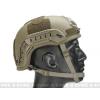 mich 2001 helmet
mich 2001 helmet
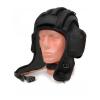 Tsh-3 Tankovyi shlem
Tsh-3 Tankovyi shlem
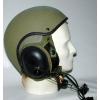 CVC DH 132 Tank helmet
CVC DH 132 Tank helmet
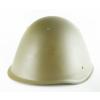 SSh-68
SSh-68
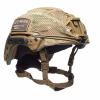 OPS Core Helmet
OPS Core Helmet


